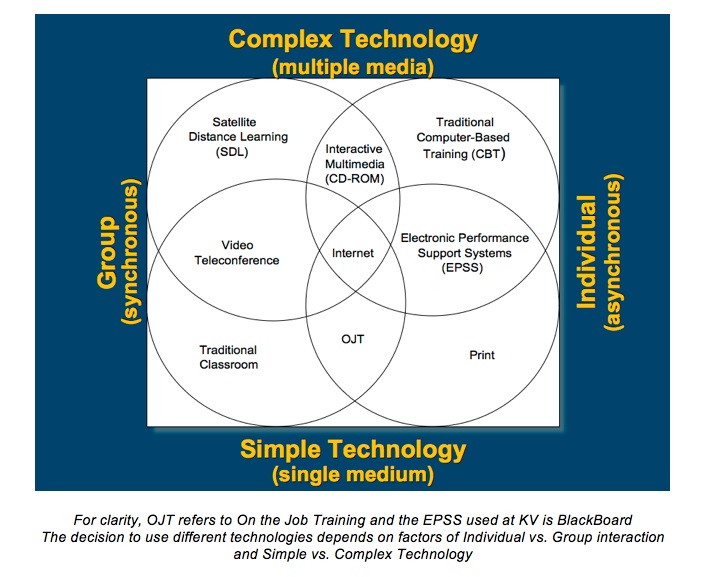KVCC Faculty Orientation Manual Online |
|
Academics (Teaching Excellence): Media in the Classroom |
|
A Brief Essay on Media in the Classroom
As a Psychologist and a Teacher I am very interested in the effectiveness of teaching methodology and none intrigue me more than the use of media in the classroom. I find it intriguing because the use of video, PowerPoint (or related presentation programs), and interactive supplements to course materials and textbooks is on the rise and, in some cases, represent an expressed goal of instruction (to integrate technology). As with all teaching methods the selection of media to include in the classroom is a deliberate one. Simply having a PowerPoint slide show or showing a movie does not necessarily guarantee that learning will be enhanced...in fact, there is gathering evidence that the use of media in the classroom may hinder learning...particularly the use of PowerPoint. Keeping in mind that the goal of instruction is student learning, instructors must select media elements that not only attract the attention of the learner but are also connected to learning objectives. Here are some examples: Video (and audio): Internet: PowerPoint Types of Media With the widespread use of dynamic media in television and the Internet the use of media in instruction is one of the hottest topics around! However, the term "instructional technology" does not only refer to CDs and computers, it refers to the variety of "technologies" and skills we use to deliver instruction. This includes group activities, quizzes, lectures, videos, computers, etc. Nearly everything we do as teachers is a type of Instructional Technology. A task of instructors is to select the best technology for the type of instruction (objectives). Different objectives lend themselves to the use of different technologies. The following chart describes the different choices you have as an instructor when choosing which Instructional Technology to use.
Use of Media KVCC has a very strong Internet based course delivery system based on courseware called BlackBoard. BlackBoard allows instructors to create online course content to either supplement their live classes or deliver classes totally online. Other technologies that are available for instructors at KVCC include videos, DVDs, CDs, Interactive CD-ROM, and many other kinds of media. Teaching Strategies The point of any discussion on Instructional Technology has to do with Teaching Strategy. Remember when we were discussing Teaching Style…this is much the same thing. You as an instructor may want to explore a variety of ways of delivering content. The grapic above identifies various components of instruction that are considered in the use of media and teaching strategies. Important considerations when selecting a teaching strategy include the following dimensions:
Each of these approaches is valid depending on the Objectives you have set for your learners. If you want them to remember specific factual information likes names and dates then you may design instruction differently than if your objective was for them to apply this information in a problem-solving situation. Click on the graphic below to download a PDF copy of this analysis of the types of media and how they interact between students and teachers. |


